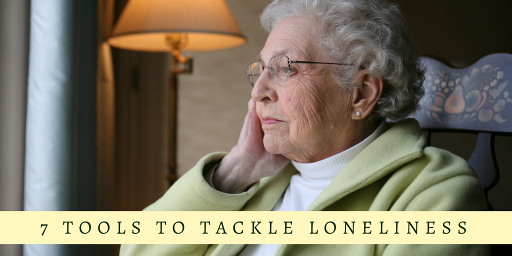
At any given time, roughly 60 million Americans, or at least one in five people, are feeling lonely, according to John T. Cacioppo, PhD, University of Chicago psychology professor, and co-author of Loneliness: Human Nature and the Need for Social Connection. A 2012 study published in the Journal of Neurology, Neurosurgery and Psychiatry showed that seniors who are lonely are 64 percent more likely to develop dementia than those who weren’t lonely. Loneliness can even lead to long-term physical health problems, including dementia.
What can you do to combat loneliness as a senior? Consider adding these tips into your figurative toolbox.
- Make the effort to ask for regular visits
You can ask your friends and family to come visit you. Don’t be afraid to ask for it, as most of them will be very willing to help you out! It’s all about human contact. Even if the visits don’t happen as often as you’d like, make the most of those that do. Go out for lunch, take a walk, and find another activity that makes you feel more connected to the outside world. Live in the moment!
- Call someone for five minutes a day
If you can’t visit in person, get into a regular habit of making a five-minute phone call every day. Ask a loved one if they can add this to their daily routine. A short and simple conversation can have a big effect on your mood, and it gives you something to look forward to every day. Be sure that you don’t only talk about yourself. Ask them about their day, and what’s going on in their life. This back-and-forth type of conversation is the most valuable kind you can have.
- Utilize the internet
A recent report from Age UK found that over a quarter of people aged 65+ who admitted to feeling lonely said that keeping in contact with family and friends via the web helped relieve feelings of isolation. If many of your friends or family members live too far away to visit in person, ask them to video chat with you. You can also send emails, whether daily or weekly, and feel like you’re still a part of their lives.
- Look into opportunities in the local area
Local community centers may offer older people a low-cost membership. From painting classes, to gentle exercise, most centers have something for everyone.
- Push to get outside the house
Be honest with yourself: how often do you leave your house? If your answer isn’t ideal, don’t despair! There are many large and small ways to get out there. Plant a garden. Join a walking group. Even doing something as simple as sitting on your porch, or in your backyard, where you can enjoy fresh air and whatever scenery your area has, can make a big difference in your life.
- Connect with your local library
Libraries are a good source of knowledge about local activities, so make sure you check noticeboards, or buy a local paper to find out about local charities and various groups. And the quiet peace of a library might be just what you need to feel connected with others, while still being able to enjoy some alone-time.
- Consider a low maintenance pet
Keeping a pet has been shown to have all sorts of mental, emotional and physical health benefits. Read my previous article, The Impact of Pets on a Senior’s Health, to learn more about how to decide if you should have a pet, and if so, what kind.
When it comes to tackling loneliness, one must first recognize that it’s a problem. By reaching out to family, friends, and your community, you can enjoy the feeling of support that people of all ages need. You have more power than you might have realized! It’s not always easy to stay positive. By taking small steps, you can build yourself up until you reach a point where you have many tools at your disposal, and can take back control of your life.

